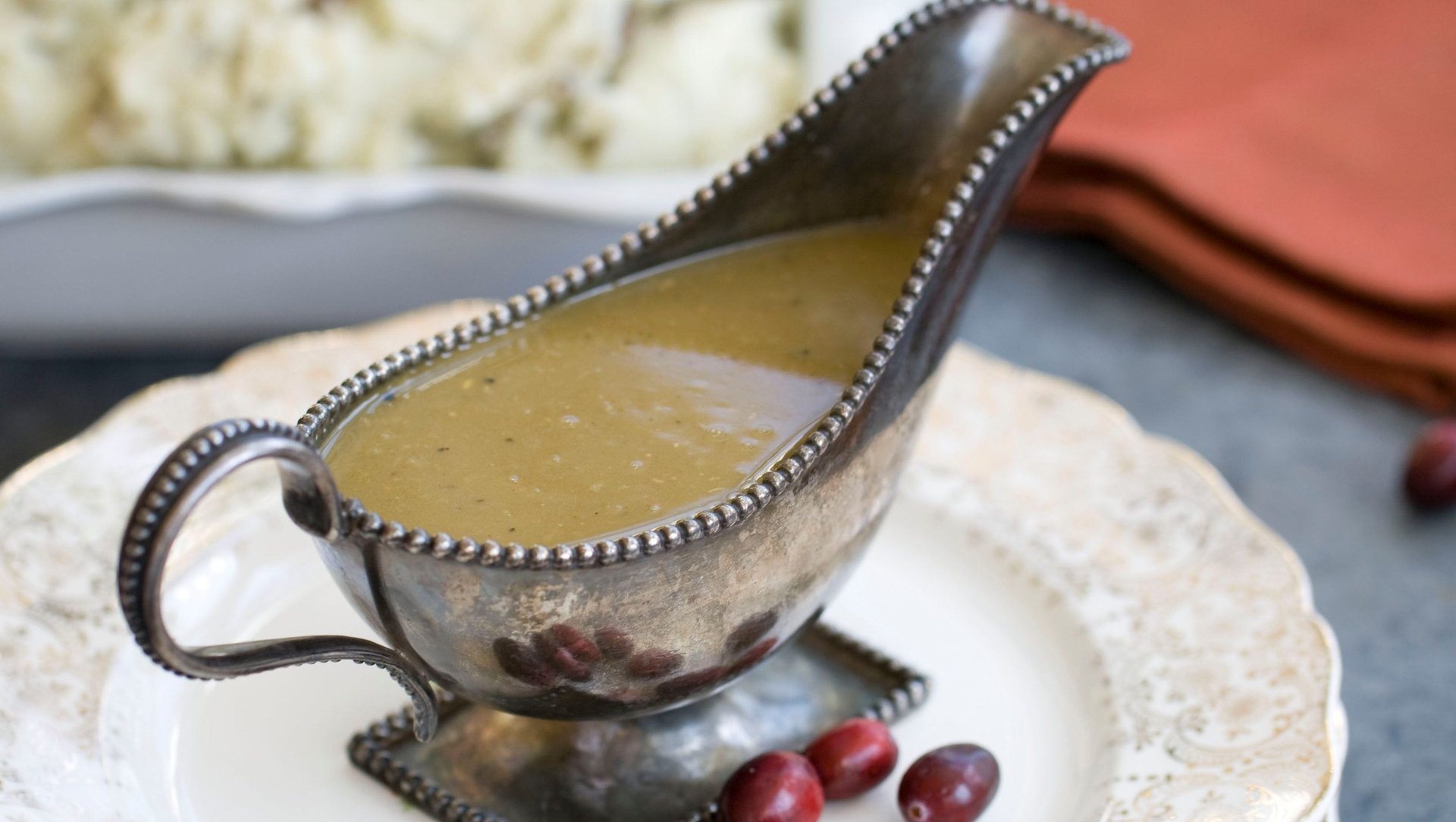Avoid last-minute gravy panic by making it ahead of time
Gravy is magic. It’s an alchemy created by combining three great things: the deep flavors produced by the Maillard reaction, the richness of animal fat, and the velvet texture that comes from a roux. But for such a simple pleasure, it’s not easy to make well. Indeed, alongside pie crust, it’s one of the more technical elements of making Thanksgiving.


Gravy is magic. It’s an alchemy created by combining three great things: the deep flavors produced by the Maillard reaction, the richness of animal fat, and the velvet texture that comes from a roux. But for such a simple pleasure, it’s not easy to make well. Indeed, alongside pie crust, it’s one of the more technical elements of making Thanksgiving.
It’s also the essential sauce that unites turkey, stuffing, and mashed potatoes, a savory pop of deep flavor in a meal that has the potential to be a table full of somewhat bland, sweet dishes. So it makes sense that a lot of Thanksgiving cooks lose a bit of sleep over their gravy.
The hardest thing about making gravy is the timing—you can’t add those delicious pan juices and browned bits until you pull the turkey out of the oven, which is usually right when you’re trying to plate your side dishes and enjoy your guests’ company.
For this very reason, the TV chef and cookbook author Ina Garten makes her gravy and turkey ahead of time. On Thanksgiving, she pours gravy on a platter, carves the turkey, and places the slices and drumsticks in the warm pool of gravy, to reheat in a low-temperature oven before serving. ”Then… you’re not all dressed up for Thanksgiving and slicing a turkey while everybody’s watching you,” she told Bon Appétit. “I don’t want to do that, and I’m a professional cook!”
Most cooks are still going to want to cook the turkey the day of, but she has a gravy strategy for that, too. Garten’s recipe for make-ahead gravy is becoming a classic, at least judging from the number of food magazines that have published it since it appeared in her 2012 cookbook, Make it Ahead.
To streamline the day, manage your workflow, and just give yourself a little more time to enjoy the party, there are three solid strategies for a make-ahead gravy.
Add drippings at the end
This would work with any gravy recipe, not just Garten’s. Think of it as a gravy base, and do everything except the part where you add the pan juices in advance. That will mean cooking flour in fat—that’s the roux—with seasonings, then thinning it out with a flavorful stock. Take that and refrigerate it until just before you pull the turkey out of the oven.
Once the turkey is cooked, put the gravy base in a pan on low heat. Remove the turkey from the roasting pan and put it on a platter to rest. Now follow the directions in the recipe of your choice for defatting and deglazing the drippings—some variation on pouring off some of the fat, and using a delicious liquid like stock or wine to scrape all the browned bits off the bottom. Cook down as desired, then pour into the gravy base and whisk until incorporated. Taste for seasoning.
Roast turkey, or chicken, parts in advance
Deep fried turkeys and grilled turkeys, two enduringly popular alternatives to roasting the bird, have lots of flavor advantages and one big drawback—no pan drippings. One way around this is to roast turkey parts in advance to make stock and gravy. Use any extra stock for stuffing and for leftover turkey soup or pot pie, or just freeze it. If the thought of even more turkey makes you want to die a little, chicken wing gravy is another way to make this work.
Use the giblets
That bag of stuff inside the cavity of the turkey? First, don’t forget to pull it out before you roast the turkey. Second, it’s very useful. Usually it contains the turkey neck, gizzards, heart, and liver. This make-ahead recipe from Bon Appetit uses the neck, as well as mushrooms and a touch of soy sauce to build flavor without having to deal with drippings, and you can prep it as soon as you bring home your turkey.
A note on gravy boats
It’s nice to pour gravy out of a gravy boat, but don’t run out and buy one just because you’re hosting Thanksgiving—shop from your cupboard first. A bowl with a small ladle works nicely, too, as does a small pitcher, or any vessel with a pour spout. And if all else fails, a Pyrex measuring cup, or even a matched pair for extra gravy coverage on a long table, lends the air of someone too serious about making gravy to worry about the vessel it’s served from.